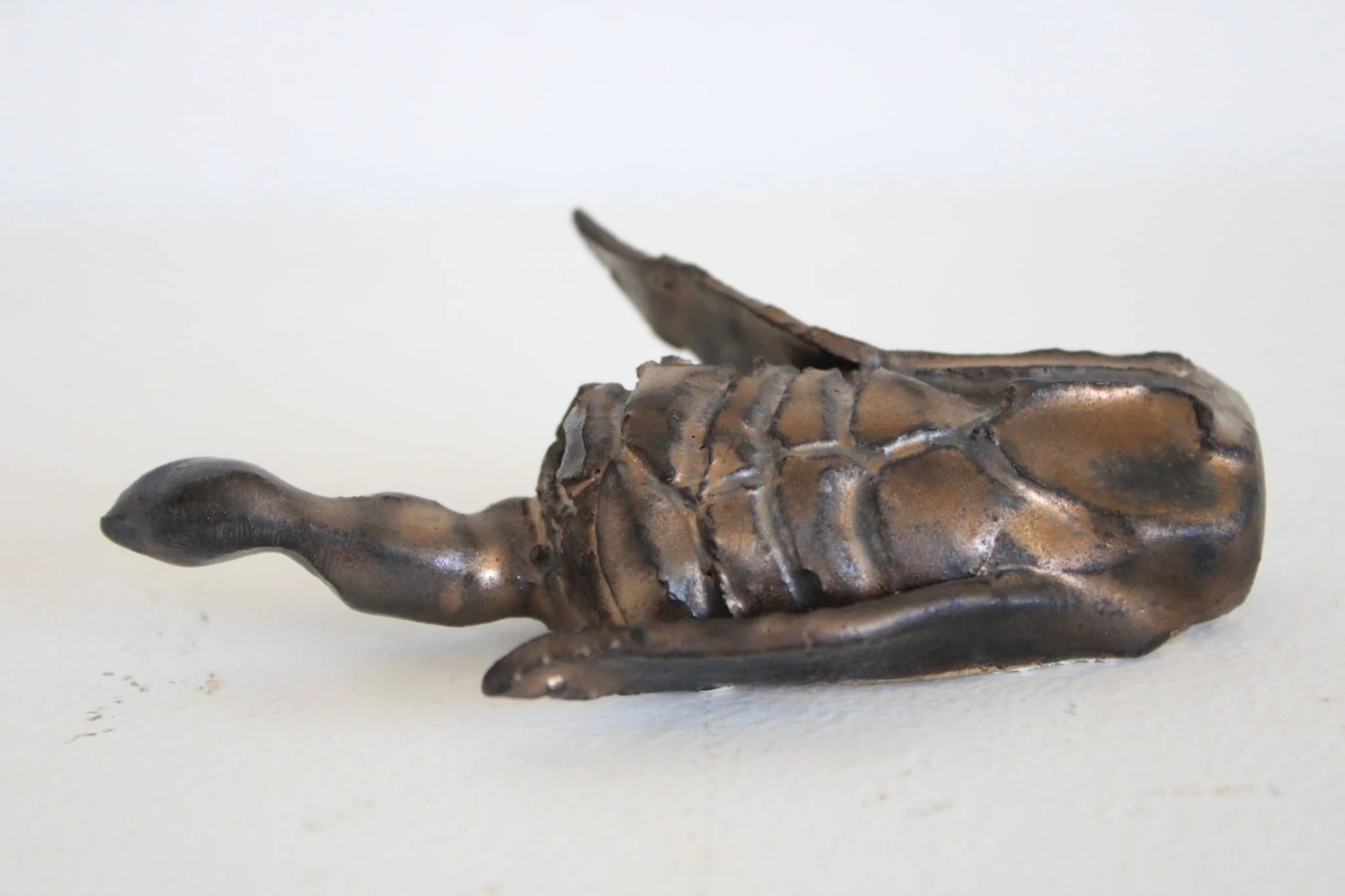Artwork No. 17:
artefact #17
Ana Franco Neto
Ceramics, 11x7cm, 2025, €80
‘This piece is part of my ongoing narrative project. Its title refers to a collection of existing artifacts that are integral to my artistic practice, where storytelling unfolds through visual means. Within this narrative, two forces seek one another—two characters interact and search for connection. One is an extraterrestrial being engaging with the earthly world; the other is a researcher devoted to studying and finding this mysterious entity. Currently, the project is focused on exploring some of the artifacts that the creature may have created during its investigations on the blue planet. This piece emerges from that exploration, inspired by a mahogany seed but reimagined with a mineral, metallic, and non-organic quality. It sheds its original organic identity to become something crafted, conceived, and transformed into an inorganic form. The paradox lies in the fact that, while these pieces represent inorganic materials, they are made from clay—one of the oldest and most primal materials humans have ever worked with.’
Ana lives and works in Lisbon, Portugal. She is currently pursuing a Master’s degree in Painting at the Faculty of Fine Arts of the University of Lisbon and was recently accepted into the CIEBA research group (Centre for Research in Basic Arts Studies).
‘Esta peça faz parte do meu projeto narrativo em curso. O seu título refere-se a uma coleção de artefactos existentes que são parteintegrante da minha prática artística, onde a narração de histórias se desenrola através de meios visuais. Dentro dessa narrativa,duas forças procuram-se – dois personagens interagem e procuram uma ligação. Um é um ser extraterrestre que se envolve com o mundoterreno; o outro é um investigador dedicado a estudar e encontrar essa entidade misteriosa. Atualmente, o projeto está focado emexplorar alguns dos artefatos que a criatura pode ter criado durante suas investigações no planeta azul. Esta peça surge dessaexploração, inspirada numa semente de mogno, mas reimaginada com uma qualidade mineral, metálica e não orgânica. Elaabandona sua identidade orgânica original para se tornar algo trabalhado, concebido e transformado numa forma inorgânica. Oparadoxo reside no fato de que, embora essas peças representem materiais inorgânicos, elas são feitas de argila – um dos materiais mais antigos e primordiais com os quais os humanos já trabalharam.’
Ana vive e trabalha em Lisboa, Portugal. Atualmentefrequenta o Mestrado em Pintura na Faculdade de Belas Artes da Universidade de Lisboa e foi recentemente aceite no grupo deinvestigação do CIEBA (Centro de Investigação em Estudos Básicos de Artes).
